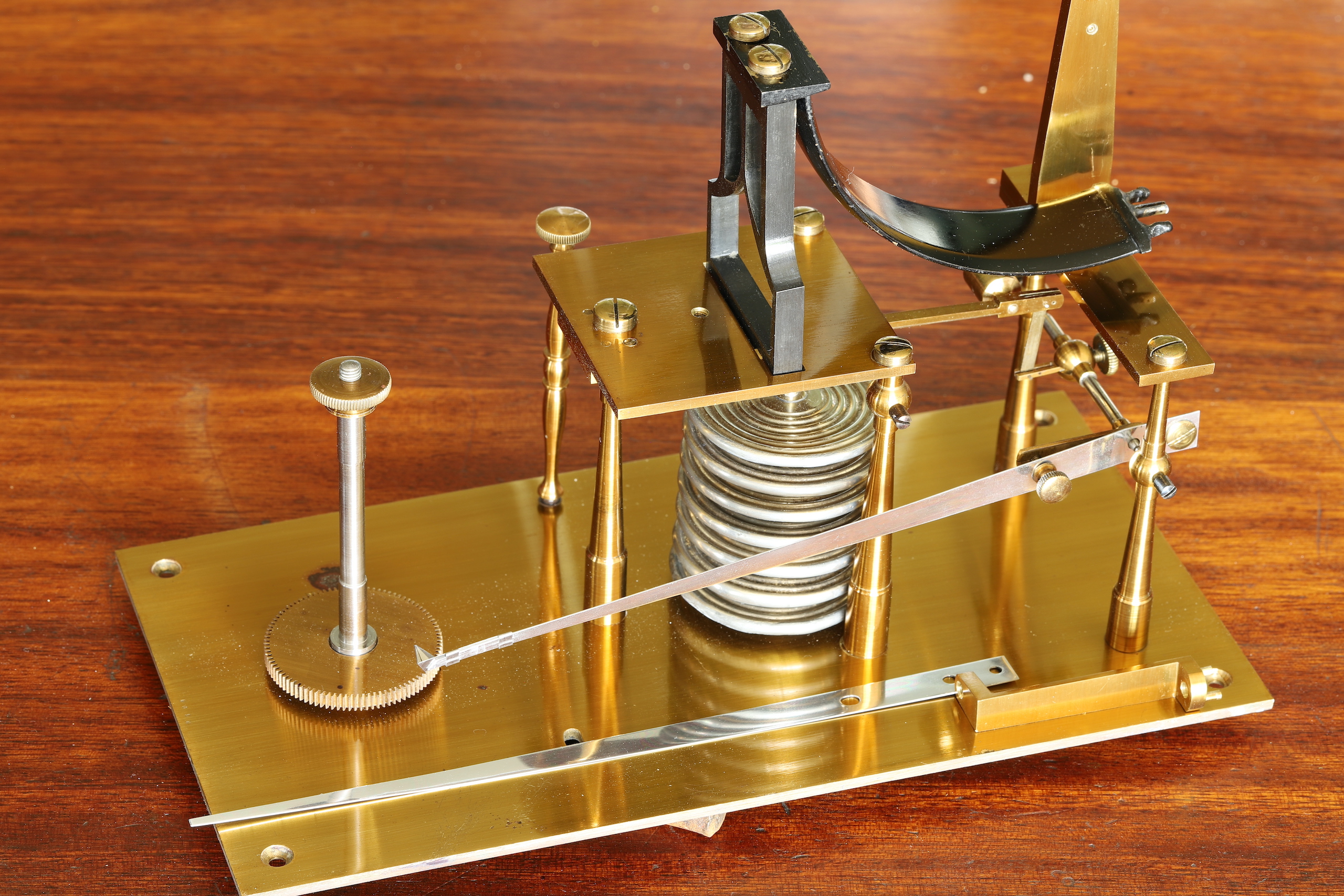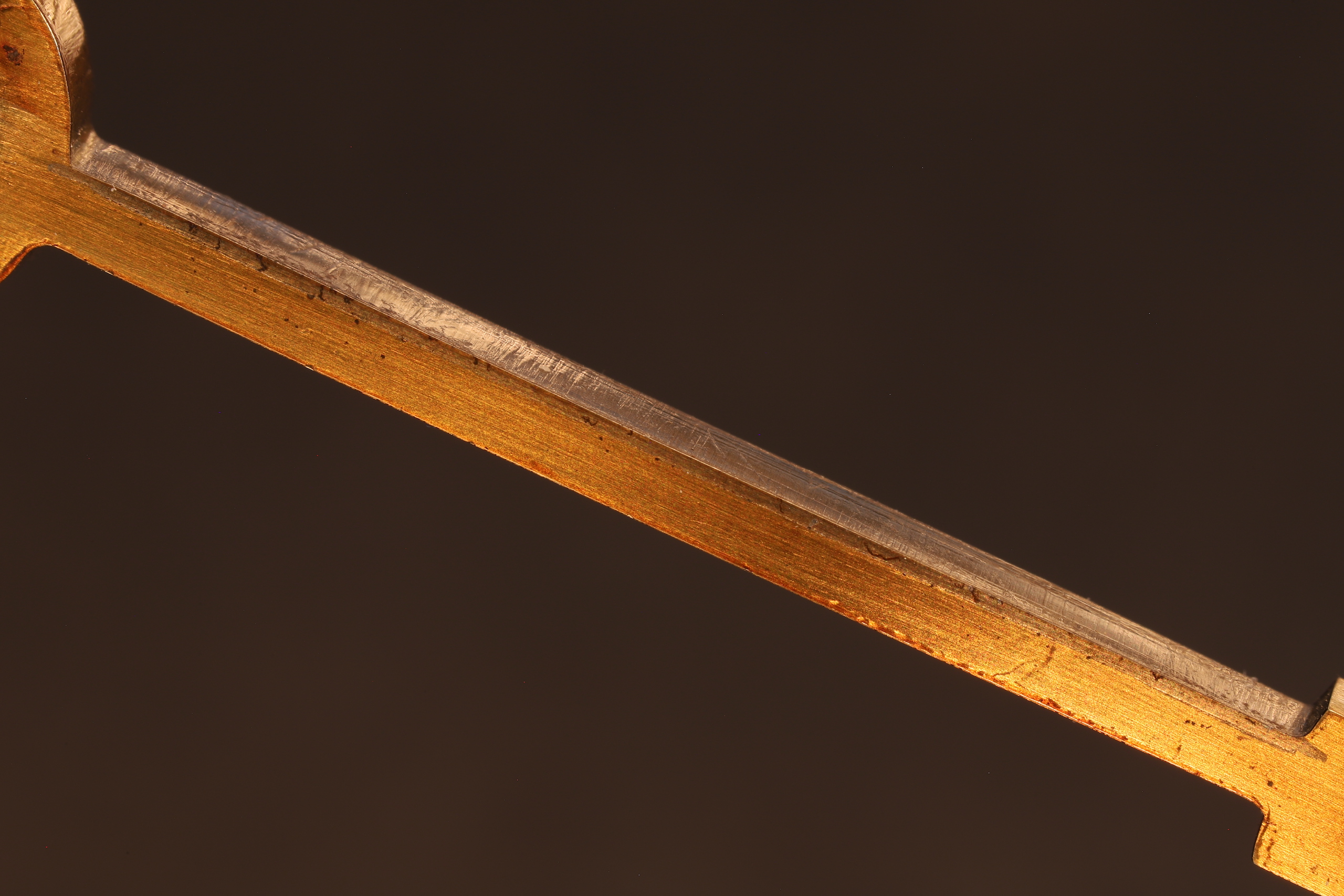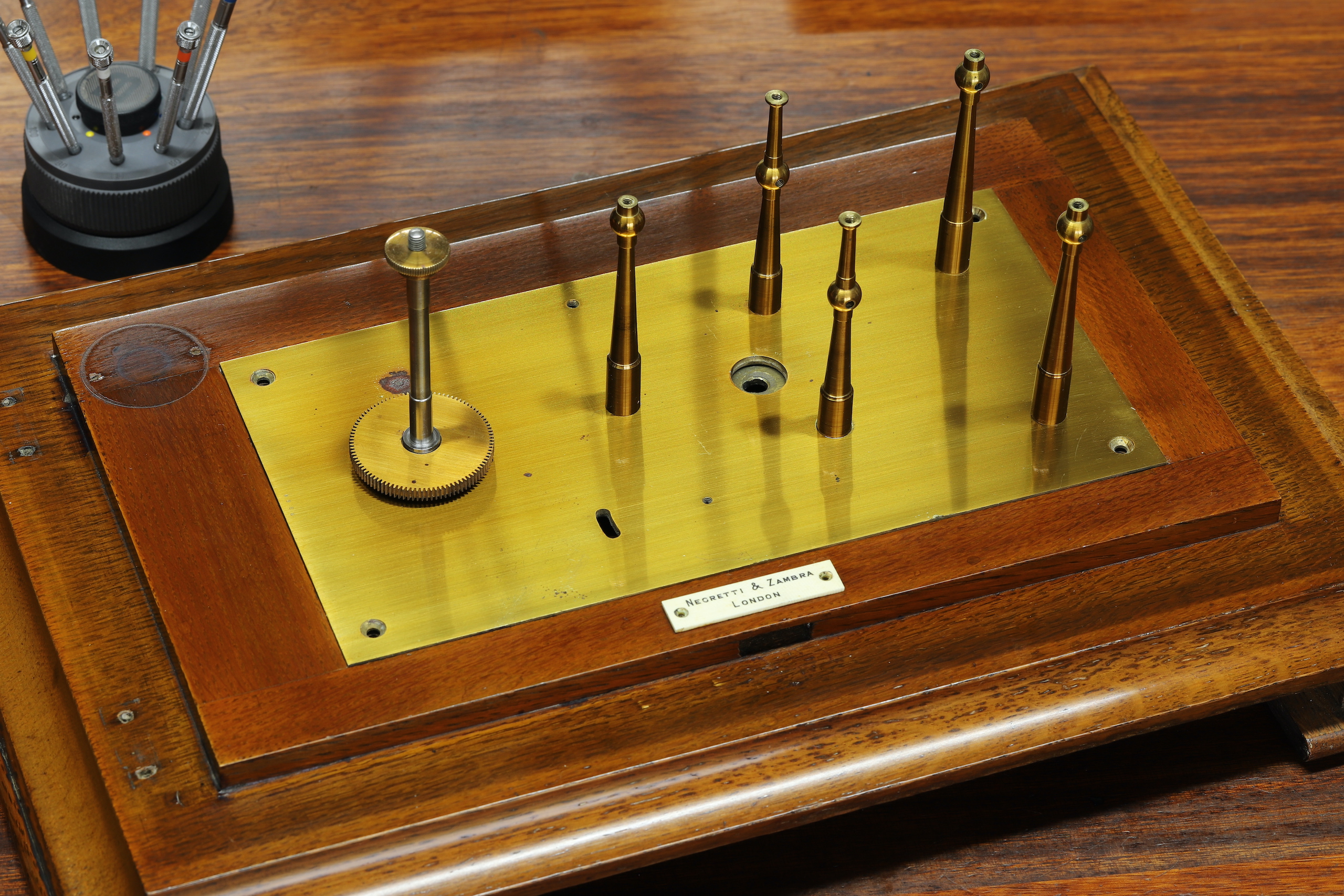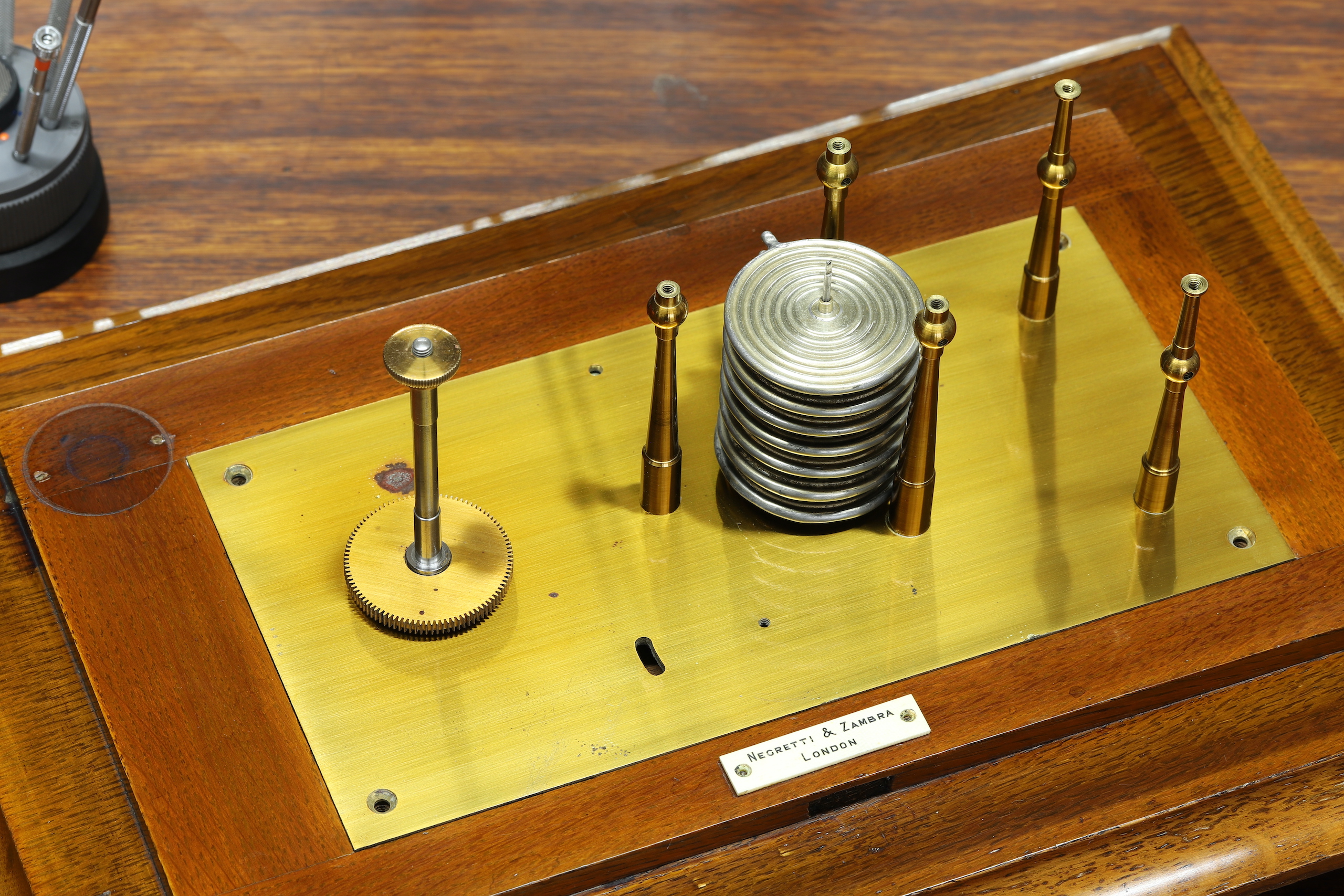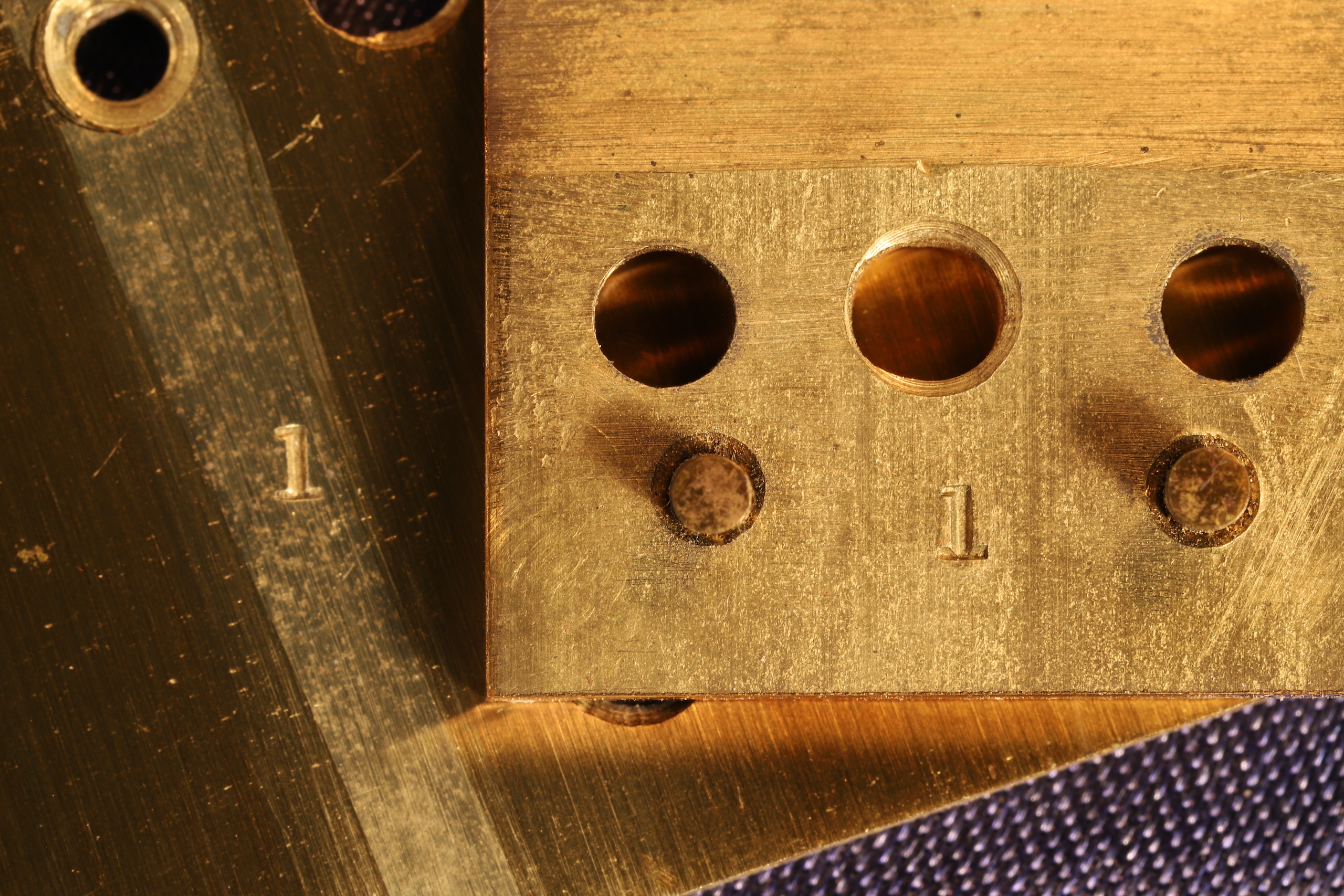Another fascinating instrument from the storeroom, and at last I can give it the attention it needs. This Negretti & Zambra barothermograph was absolutely filthy, caked in dust and grime, and working to a point but not much more. Nonetheless, I could see that this would come good with careful conservation techniques.
I always start a project like this by checking for full and relatively free movement, then a visit to the vacuum chamber to see where we are.
Next is the strip down. In many cases the screws and pins won’t have been touched since the instrument was built and are reluctant to move – static friction principally caused by oxidation is the prime culprit when it comes to things that won’t move. Patience here, and knowing how to, are the essential ingredients to taking the thing apart without breaking anything or marking any of the surfaces.
I have always wondered why you see so many mangled screw heads: the reasons are many but mainly stem from ignorance, wrong tools and impatience. The right sized screw driver with a hand-ground blade properly trued up is the saviour of the day.
Once apart, each component is carefully assessed. This barothermograph yielded up some surprises: first, nothing lined up at all – it was badly assembled from new, leaving components forced together with resulting pre-loads, very detrimental for a fine instrument of any type, unless of course the pre-load is deliberate.
The second surprise was Negretti & Zambra’s answer to temperature compensation. This is most usually achieved in aneroid barometers with a bi-metallic strip, normally as part of the primary lever. In barographs, however, makers’ attempts at temperature compensation are concealed either in clever design or employing the method of partial evacuation of the pressure sensing cells, leaving a small amount of dry air inside which as temperature rises and falls expands and contracts.
In the case of this barothermograph, as I was disassembling the pressure cells from the primary lever, I noticed what looked like a silver or bright metallic surface on the underside of that lever. It was bi-metallic temperature compensation, no less!
So near enough a week’s work from start to finish. Re-aligning all the components in the barometer train was a nightmare because of the inherent design constraints, the pre -set positions of columns, etc. The thermograph was much more simple. This is an elegant mechanism driven from an alcohol-filled Bourdon tube (the black thing that looks like a ski ramp!).
After some initial testing and complete re-calibration of the barometer, a result! Both systems working exceptionally well, and without doubt better than when new.
Nibs are always difficult and especially so where you have two traces close together. The line thickness should be very similar and so the points have to be honed and bedded in to match. You’ll see from the first images, taken at first test, to the last with all the tuning tweaks completed, quite a different result.
These early instruments may be easily classified as rare, later manifestations ditching the Bourdon tube of the thermograph and replacing it with a bi-metallic coil, in my view not nearly so attractive or interesting.
Dating this barothermograph is not straightforward. That said, my feeling is that it was constructed around 1905-10, as evidenced in the many design cues inherited from Richard Freres whose products Negretti & Zambra retailed before they set up their own production.
